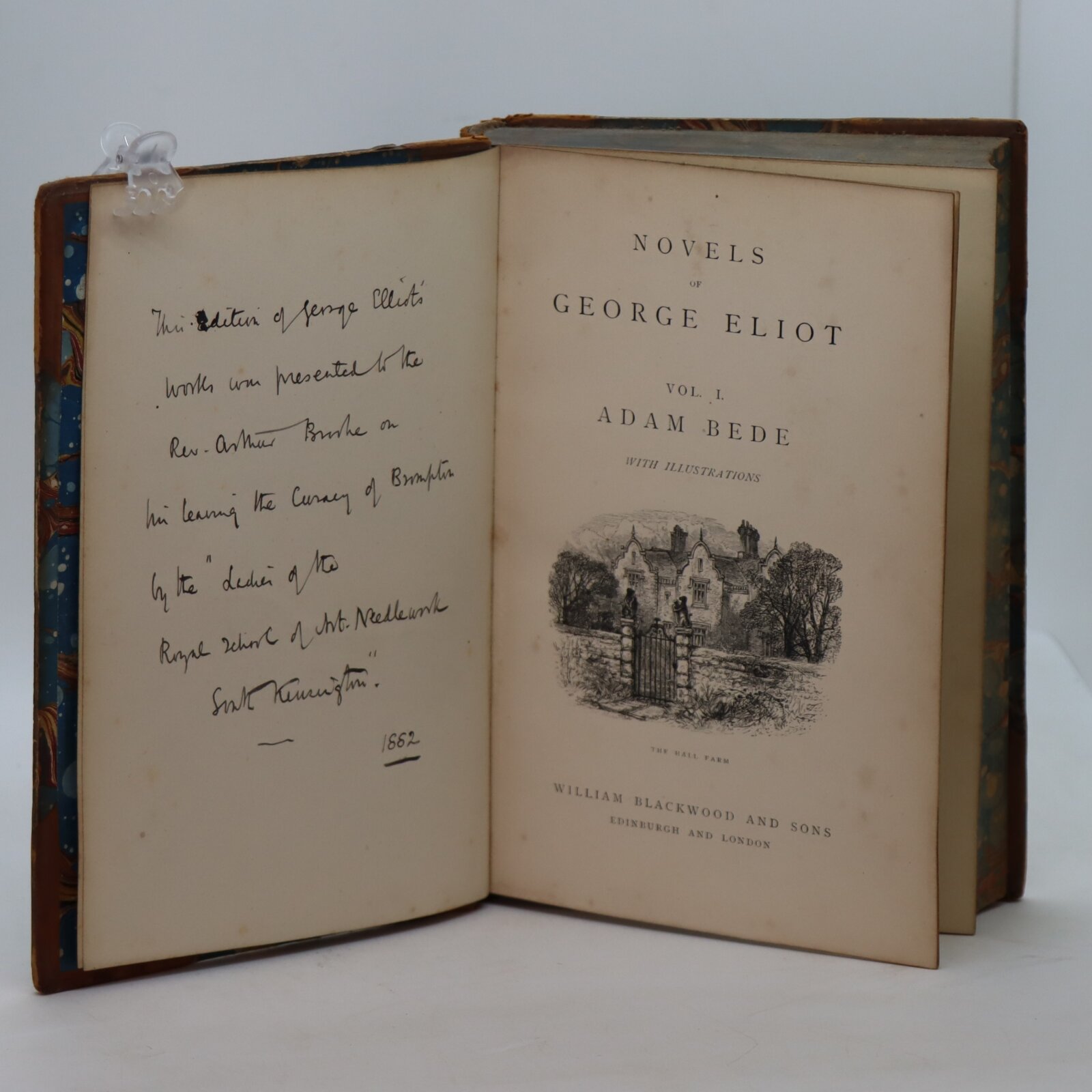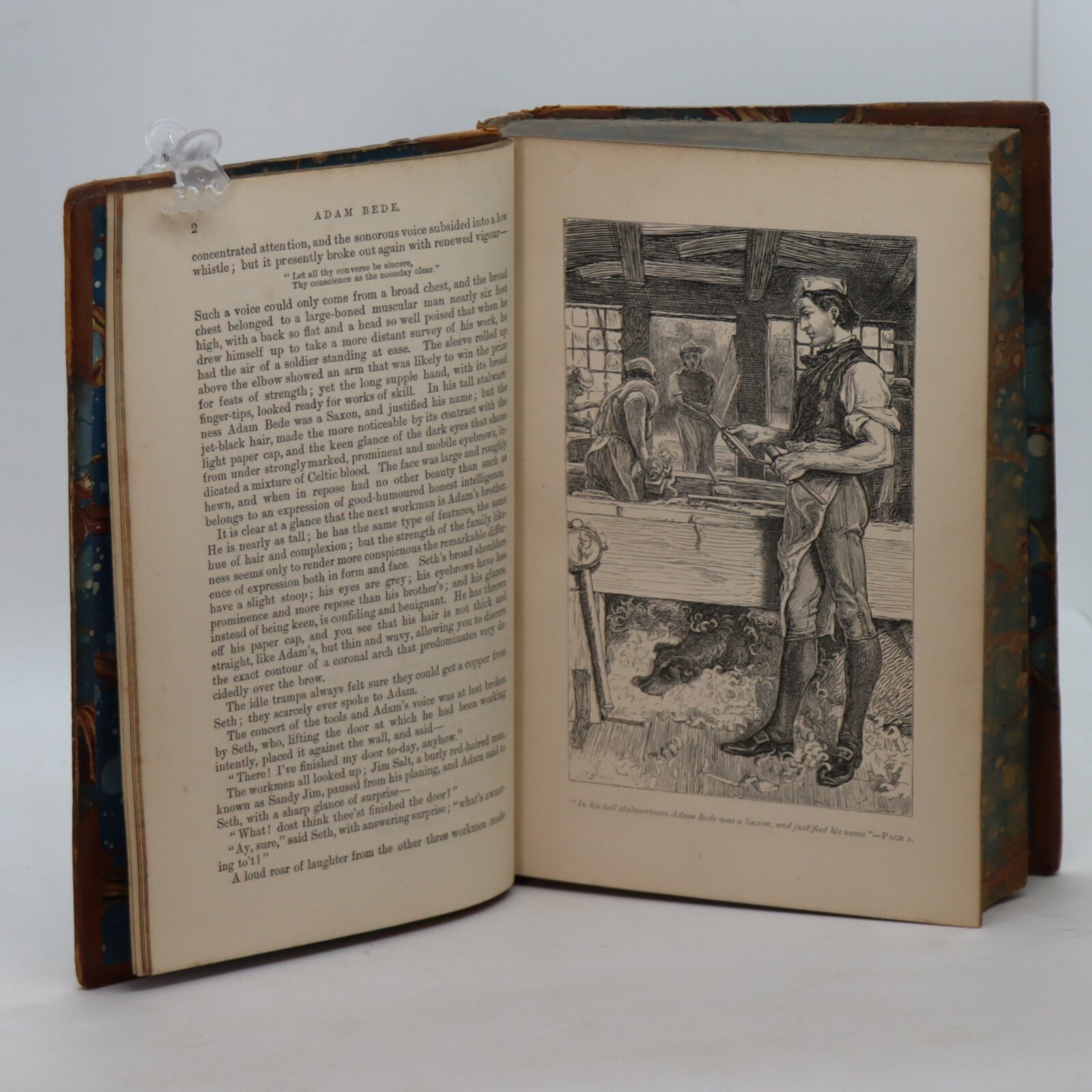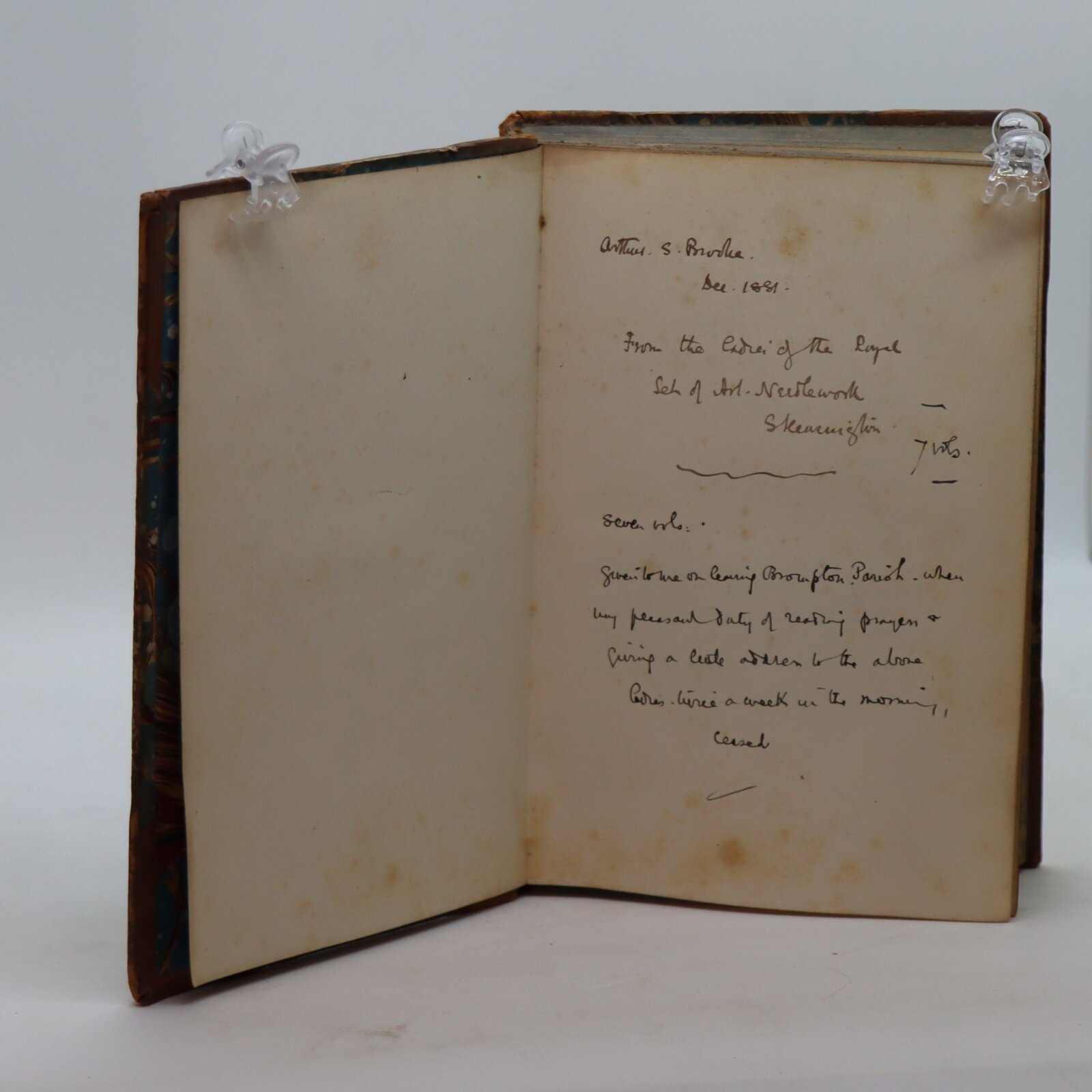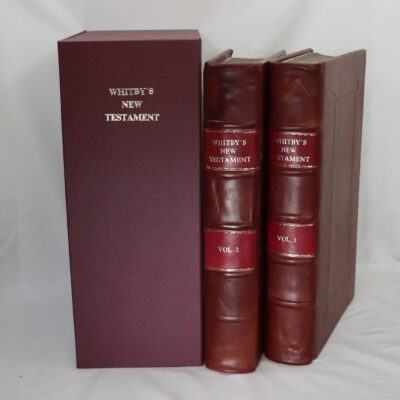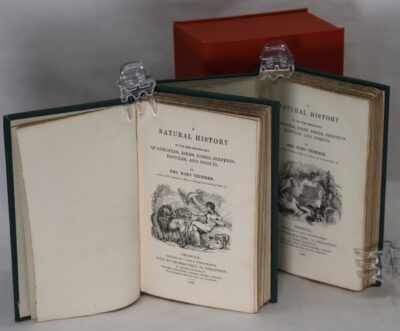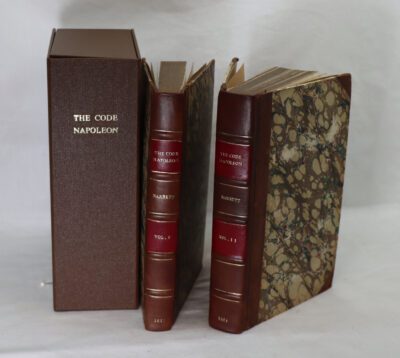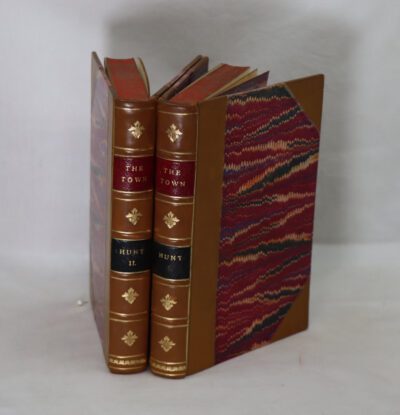George Eliot's Novels. Adam Bede.
By George Eliot
Printed: Circa 1890
Publisher: William Blackwood & Sons. Edinburgh
| Dimensions | 13 × 19 × 3.5 cm |
|---|---|
| Language |
Language: English
Size (cminches): 13 x 19 x 3.5
Condition: Fine (See explanation of ratings)
Your items
Item information
Description
Tan leather binding with green marbled boards. Red and black title plate with gilt lettering and ornate decoration on the spine.
A good book with a pedigree
It is the intent of F.B.A. to provide an in-depth photographic presentation of this book offered so to almost stimulate your feel and touch on the book. If requested, more traditional book descriptions are immediately available.
Adam Bede is Eliot’s first experiment with the type of new fiction that she pioneered. She tests a new view of the function of prose fiction as more than entertainment and diversion from the problems of real life. Eliot argued that like poetry, novels can express and teach serious ideas about the quality of the human condition.
Adam Bede was the first novel by Mary Ann Evans (George Eliot) and was published in 1859. It was published pseudonymously, even though Evans was a well-published and highly respected scholar of her time. The novel has remained in print ever since and is regularly used in university studies of 19th-century English literature. She described the novel as, “A country story full of the breath of cows and scent of hay”.
Mary Ann Evans (22 November 1819 – 22 December 1880; alternatively, Mary Anne or Marian), known by her pen name George Eliot, was an English novelist, poet, journalist, translator and one of the leading writers of the Victorian era. She wrote seven novels: Adam Bede (1859), The Mill on the Floss (1860), Silas Marner (1861), Romola (1862–63), Felix Holt, the Radical (1866), Middlemarch (1871–72) and Daniel Deronda (1876). Like Charles Dickens and Thomas Hardy, she emerged from provincial England; most of her works are set there. She is known for their realism, psychological insight, sense of place and detailed depiction of the countryside.
Although female authors were published under their own names during her lifetime, she wanted to escape the stereotype of women’s writing being limited to lighthearted romances. She also wanted to have her fiction judged separately from her already extensive and widely known work as a translator, editor, and critic. Another factor in her use of a pen name may have been a desire to shield her private life from public scrutiny, thus avoiding the scandal that would have arisen because of her relationship with the married George Henry Lewes.
Middlemarch was described by the novelist Virginia Woolf as “one of the few English novels written for grown-up people” and by Martin Amis and Julian Barnes as the greatest novel in the English language.
Want to know more about this item?

Related products
Share this Page with a friend

